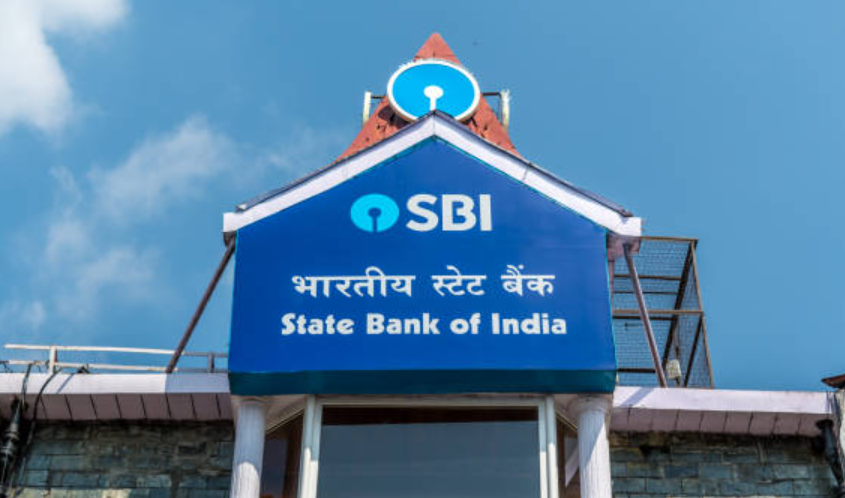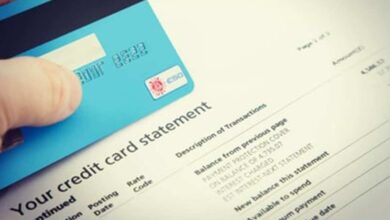 SBI is one of the most popular banks in India. It has a wide network of branches all across the country. With a variety of services, the bank endeavours to provide a smooth banking experience to the customers. The services provided by SBI are saving and current accounts, credit and debit cards, loan facilities, investment options, etc. It provides both offline and online banking portals and sets specific timings for all the services. It’s good to know the timings so that we can plan our schedules effectively. So, let’s see the SBI bank timings for different services.
SBI is one of the most popular banks in India. It has a wide network of branches all across the country. With a variety of services, the bank endeavours to provide a smooth banking experience to the customers. The services provided by SBI are saving and current accounts, credit and debit cards, loan facilities, investment options, etc. It provides both offline and online banking portals and sets specific timings for all the services. It’s good to know the timings so that we can plan our schedules effectively. So, let’s see the SBI bank timings for different services.
SBI bank timings on Weekdays
From Monday to Friday, the bank opens at 9 am and closes at 3:30 pm. Customers can visit the bank during these working hours and get their work done.
SBI bank timings on Saturday and Sunday
On the second and fourth Saturdays, the bank is closed. On the first, third and fifth Saturdays, the bank remains open from 9 am to 3:30 pm. On all Sundays, the bank is closed.
SBI lunchtime
SBI sets a lunchtime but there is no interruption in their service. The staff go for lunch at different times to make sure that the needs of the customers are met without interruption.
Apart from these timings, some days might be a holiday. So, check out this bank holiday list too.
| Date | Day | Holiday |
| Jan 1 | Monday | New Year’s Day |
| Jan 15 | Monday | Makara Sankranti |
| Jan 17 | Wednesday | Guru Gobind Singh Jayanti |
| Jan 23 | Tuesday | Netaji Subhas Chandra Bose Jayanti |
| Jan 26 | Friday | Republic Day |
| Mar 8 | Friday | Maha Shivaratri |
| Mar 25 | Monday | Holi |
| Mar 29 | Friday | Good Friday |
| Apr 9 | Tuesday | Ugadi |
| Apr 10 | Wednesday | Idul Fitr |
| Apr 14 | Sunday | Dr Ambedkar Jayanti |
| Apr 17 | Wednesday | Ram Navami |
| Apr 21 | Sunday | Mahavir Jayanti |
| May 1 | Wednesday | May Day |
| May 10 | Friday | Maharshi Parasuram Jayanti |
| May 23 | Thursday | Buddha Purnima |
| Jun 17 | Monday | Bakrid / Eid al Adha |
| Jul 17 | Wednesday | Muharram |
| Aug 15 | Thursday | Independence Day |
| Aug 19 | Monday | Raksha Bandhan |
| Aug 26 | Monday | Janmashtami |
| Sep 7 | Saturday | Ganesh Chaturthi |
| Sep 16 | Monday | Eid e Milad |
| Oct 2 | Wednesday | Gandhi Jayanti |
| Oct 10 | Thursday | Maha Saptami |
| Oct 11 | Friday | Maha Ashtami |
| Oct 13 | Sunday | Vijaya Dashami |
| Oct 17 | Thursday | Maharishi Valmiki Jayanti |
| Oct 31 | Thursday | Deepavali |
| Nov 1 | Friday | Diwali |
| Nov 2 | Saturday | Deepavali Holiday |
| Nov 3 | Sunday | Bhai Dooj |
| Nov 15 | Friday | Guru Nanak Jayanti |
| Dec 25 | Wednesday | Christmas Day |
If you don’t have time to visit the bank but want to carry out some banking activities like fund transfer or balance check, you can do it online. All the banks have introduced their mobile banking apps such as SBI YONO by SBI, m Bandhan by Bandhan bank, Canara ai1 by Canara Bank, IndOASIS by Indian bank, etc. So, it’s much like you have your bank in your pocket. Let’s see how we can perform some of the banking activities.
Balance check through Mobile banking apps
- First, you need to download and install the mobile app of your bank available in your app store.
- Set it up by linking your bank account to the app. You can link more than one account with the app. To link your bank account, you have to enter your account details and your debit card details.
- After the account is linked with the app, go to the “account summary” option.
- Tap on it and now, you will see your current account balance on the device screen.
Balance check through phone call
You can check your account balance by just calling the bank’s account balance check number.
- Get the balance check number of your bank and call it from your registered mobile number and wait for the call to be disconnected automatically.
- Shortly after the call, you will get your mini statement on your number in the form of an SMS containing the last 5-10 transactions and the current balance in your account.
If your number is not registered with the bank yet, register it by following the steps below:
- For online registration, you have to go to the official website of your bank.
- Then, in the profile section see if there is an option for “update mobile number”. Select that.
- Then, the next step is to enter the mobile number you wish to update. Enter all the other required details such as your account number, name, address, etc.
- Then, your mobile number will be registered with an Indian overseas bank.
- If you want to do it offline, you need to go to a nearby bank branch.
- Request the staff for a mobile number registration form.
- Enter all the required information such as your personal details, account details and the mobile number you wish to register.
- Then, submit it along with some identity proof documents. These documents can be your Aadhaar card/driving licence/any other government-issued identity card. The bank staff will verify the form and your mobile number will be registered with the bank.
Balance check through SMS banking
You can also check your account balance by just sending a text to their balance check number. There are certain code words for each bank. Find out that code, compose a message and send it to 84240 22122. Then, the bank will send you a reply text containing the last 5-10 transactions and the current balance in your account.
Balance check through Internet banking
- If you are already registered for Internet banking, go to the official website of your Bank and log into your account using the user ID and password that you created.
- Click on “account summary” and there you will see your current balance in your account. You can also get a bank statement through Internet banking by selecting a longer timeframe.
You can also perform other banking activities through the Internet banking portal.
Registration for Internet banking
Open the browser on your device and go to the official website of your bank. There will be an option for registration under the ‘Online Banking’ or ‘Login’ section. You have to enter some details like account number, card details, personal information, and the bank will send an OTP (One Time Password) to your registered mobile number for verification. After entering all those, set up a user ID and password. A strong password is suggested, it will be a combination of alphabets, numbers, and special characters for. After registration, you can log in to your account using the newly created credentials. Most of the time the bank prompts users to set a security question and its answer to enable two-factor authentication or link a registered device for extra security. Set something familiar to you as security questions and answers lest you should forget or get confused with it later. This is to help you recover your password.







